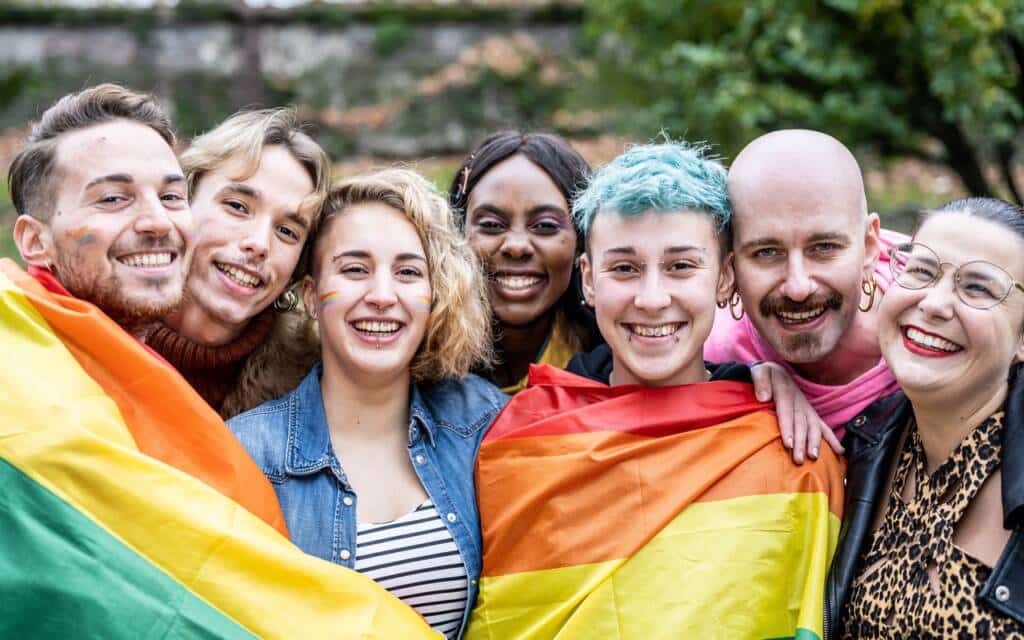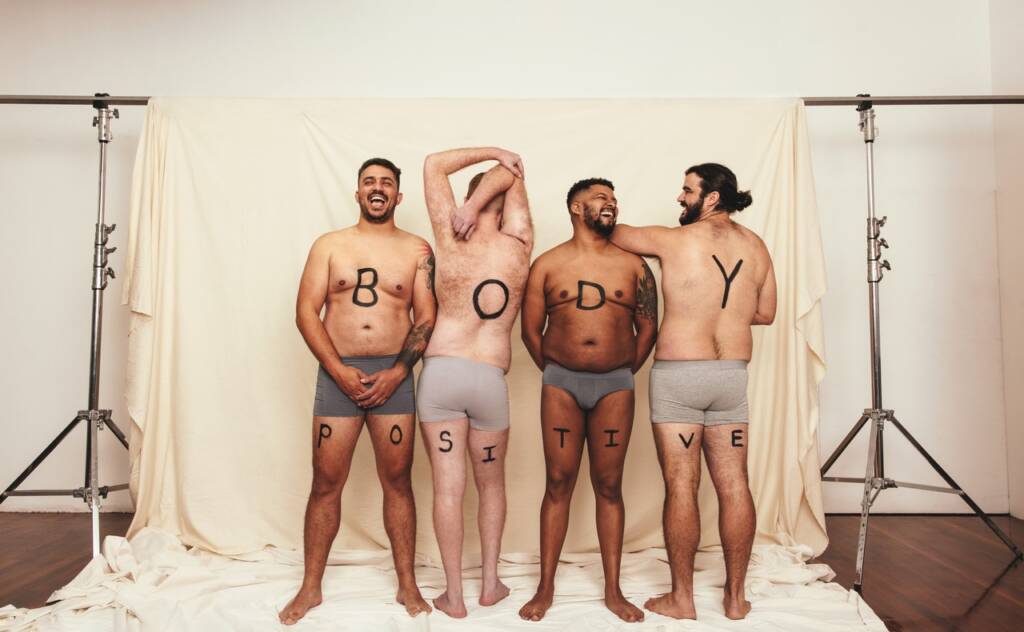The society we live in thrives on labels. Be it our nationality, religion or ethnicity, we love categorising ourselves. No doubt it divides us, but it also allows us to build relationships, explore our interests and identify with people of our kind. It helps us undertake the journey from who we are supposed to be to who we want to be. Your personal identity is an amalgamation of a number of individual verticals. In this article, we explore one of those verticals, i.e. sexuality.
Quite a few of us believe sexuality to be a close-ended term. However, sexuality is far beyond who you choose to have sex with. It encompasses your thoughts, feelings, emotions and behaviours towards others. It’s how you understand your body and your relationships. And this understanding can be influenced by multiple factors such as your beliefs, desires and gender. Because sexuality is made up of so many components, our perception of our own sexuality is ever-changing and unique. It may seem bewildering now but stay with us and we’ll make you get the drift of it all.
Gender vs Sexuality
It would be hard to believe if you say you’ve never been confused between the two. To err is to humans, after all. But today, in the 21st century, ignorance is no more bliss. So we’ll come straight to the point. What you are identified as at birth is your gender whereas, your sexuality depends on who you are physically and romantically attracted to. To understand the difference between these two convoluted terms let’s take a backwards approach.
You must have come across the term LGBTQ+. Here, L stands for Lesbians, G for Gays, B for Bisexuals, T represents the Trans community and Q means Queer, which is an umbrella term for anyone who doesn’t identify with the mainstream heterosexuals. Queer can include Asexuals, Pansexuals, or Questioning. Hold on, did we lose you? Let us simplify it.
Keep one thing in mind while you read ahead, the gender assigned to a baby at birth, called natal sex, is either male or female and is based on the child’s external anatomy. This means that if a child is born with a penis he is considered to be a male and if the baby has a vagina she is considered a female. We will use the terms ‘female’ and ‘male’ in the same manner for your easy understanding.

Lesbians
Females who are physically, emotionally and sexually attracted to females.
Gays
Males attracted to other males in a physical, emotional and sexual manner.
Bisexuals
Females or males who feel physically, emotionally and sexually attracted by both females and males. Bisexuality can have various degrees. This is to say, a person is interested in both males and females but inclined towards one more than the other. This interest may take various forms as well. For example, a bisexual individual may be drawn to both males and females but has intercourse with only one of them.
Transgenders
The word trans has its root in Latin where it means ‘across’ or ‘on the other side’. Thus, transgender represents people whose gender is on the other side. Having said that, those who do not conform with their natal sex or either male or female at all call themselves transgender. This means that a trans person is either identified as male or female at the time of their birth given their genitals but they do not harmonise themselves with their assigned gender. They either feel belongingness to the opposite gender or neither of the two.
Trans people are broadly classified into two categories
- AFAB – Assigned Female At Birth
- AMAB – Assigned Male At Birth
Another word that originated along with transgender was Cisgender. Cis in Latin means on the same side. Thus people who recognise themselves as with their natal sex are cis genders.
Asexuals
People who experience little to no sexual or physical attraction towards any gender are called asexuals (ace for short). Asexuality is different from abstinence where a person chooses not to have sex irrespective of their want or urge. In the case of asexuals, there exists no desire to involve in sexual activity whatsoever. However, asexuals may be romantically attracted to individuals of the opposite gender or even the same.
Pansexual
A person who is physically, emotionally and sexually attracted to all genders. Pan sexuals may also be referred to as ‘gender-blind’ given that gender is not a determinant for them to be drawn to someone.
Now that we have our glossary with us, let’s go back to the acronym LGBTQ+. Now, L, G and B are sexualities or sexual orientations whereas T is a gender. To get it right, remember, a lesbian is a female who was identified as female, agrees to her ‘natal sex’ and is attracted to another human who was also identified as a ‘female’. Likewise, a bisexual male resonates with being a ‘male’ and feels for both ‘females’ and ‘males’. But in the case of trans people, they do not agree with their ‘natal sex’. A trans male was assigned a ‘female’ at birth and vice versa.
Let’s separate the wheat from the chaff. There are a few broad brackets of gender such as Cisgender, Transgender, Polygender and Omnigender (person who identifies with traits of multiple genders) and Non-Binary (people who identify with no gender). Cisgender biforcates into female or male. Transgenders segregate themself as transmasculine and transfeminine.
That was to deal with gender. Now let’s talk about sexuality.
Sexuality – Strong, wild, warm and free!
We shall start with the most important aspect of sexuality which is self-definition. Every individual has the right to define their own sexuality. Your sexual orientation should make perfect sense to you first and only then should others matter. Second in order comes the fact that sexuality is dynamic. Different parts of our lives may interact with each other in affirming or confusing ways. And that’s perfectly normal. Exploring your sexuality plays a prominent role in determining your state of mental and social well-being. Our level of awareness, acceptance and enjoyment of our own and others’ bodies and our ability to have and express the need for intimacy (emotional and physical) with our partners also come under the purview of sexuality.
Sexuality is personal and diverse. While many of us have it easy, some have a difficult time identifying their sexuality. Discovering and being able to associate oneself with their sexual identity is an extremely liberating experience. Aforementioned, you may also have different sexualities in different phases of your life. You may be drawn to males, females, both or neither at one point in your life or another. And that’s perfectly normal. Although there are terms to describe sexual orientations you mustn’t fixate and try to squeeze yourself into a category. You will have it figured out eventually.
While we make our way through this labyrinth where we explore our different identities there are various hurdles we must overcome. One such shackle we must break through is body image. In our next section, let’s talk about body image and its connection to sexuality.
The Sexy Body

We all know a lean and fit body is healthy. However, the obsession with particular body types today goes way beyond it. We fantasise about body images that are not only difficult to achieve but have long-term detrimental effects on our health. In order to look a certain way, we change our diet sometimes giving up on necessary nutrients along with our comfort foods. This leads to deficiencies and causes illnesses. Societal pressure over body image also affects our self-esteem and morale. In its worst case, this preoccupation with one’s body and looks metamorphosises into what is known as Body Dysmorphic Disorder. People suffering from Body Dysmorphic Disorder have a distorted image of themselves and worry excessively about a perceived flaw in their appearance. Body dysmorphia is usually accompanied by deep shame about what their body looks like.
While the pressure that heterosexuals go through to look at a certain way cannot be overstated the story of homosexuals takes another route.
Do You Think You’re Sexy?
Research shows that homosexual men (gays and bisexuals) suffer from an increased level of body dissatisfaction. The objectification theory is a plausible explanation for this trend seen among these sexual minorities. The theory posits that gays and bisexuals have additional pressure to look ‘desirable’ with a lean and muscular body. This pressure stems from the fact that men, regardless of their sexual orientation place a stronger emphasis on physical appearance compared to women. Thus, homosexual men attempting to attract men have to try harder. This self-objectification leads to constant monitoring of one’s body, assessing one’s physical appearance instead of attending to how it feels or functions. Subsequently, pent-up dissatisfaction and self-doubt may lead to mental issues such as anxiety disorders and depression.
In general, women have a more negative body image than men with up to 80% of females reporting dissatisfaction with their own bodies. However, there exists a significantly lower drive for a thinner body in homosexual women (lesbians and bisexuals) than in heterosexual women. Homosexual women have also been observed to invest lesser in their own bodies, such as dieting or exercise in comparison to heterosexual women. Furthermore, homosexual women prefer a body ideal with significantly more body fat than heterosexual females.
On top of that, a recent study reported a higher drive for masculinity among homosexual women than in heterosexual women. While the case of discontentment seems to be better with homosexual females it’s not absolutely fine. Females, irrespective of their sexualities, are constantly put under public scrutiny to look a certain way.
The fretfulness with one’s body image is intimately tied with sexual health. Individuals who are dissatisfied with their appearance may find sex challenging and anxiety-provoking, as attention is focused on their bodies instead of the experience. Preliminary data suggest that body dissatisfaction may negatively influence the quality of sexual health among homosexuals. Still, further, it hints that body dissatisfaction may serve as a distal risk factor for HIV transmission through poor sexual self-efficacy, and subsequently, condomless sex in pursuit of pleasure.
Sexy & You Know It
Conclusively, what matters is your love for yourself. You may take a while to be okay with the fact that you are not typically like other people around you or your preferences differ from theirs and that’s fine. Take your time to own up to the differences. Remind yourself every day or more often that you love who you are and that’s all the validation you’ll ever need. The most powerful thing anyone can tell us is what we tell ourselves. All you have to do is find out who you are and then do it on purpose. Remember they can’t scare you if you scare them first!


